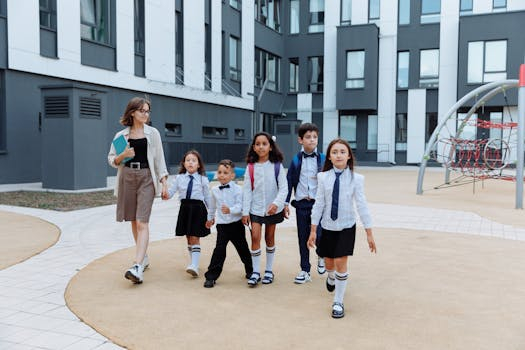Building Inclusive School Communities
In today’s diverse and multicultural society, it is crucial for schools to create an inclusive environment where every student feels valued and accepted. Building inclusive school communities not only benefits students from different backgrounds, but also promotes a positive learning experience for all. In this article, we will explore the importance of inclusivity in schools and discuss practical strategies for schools to promote diversity and create an inclusive school community.
The Importance of Inclusivity in Schools
Promotes a Sense of Belonging
Inclusive school communities foster a sense of belonging among students. Students who feel a sense of belonging are more likely to be engaged in their learning and have a higher level of self-esteem. On the other hand, students who feel excluded may experience feelings of loneliness, isolation and low self-worth. By promoting inclusivity, schools can ensure that all students feel a sense of belonging, leading to a more positive and supportive learning environment.
Prevents Discrimination and Bullying
Inclusive school communities also play a vital role in preventing discrimination and bullying. When students are exposed to a diverse range of backgrounds, cultures, and identities, they learn to be more open-minded, accepting and respectful. This helps to create a safe and welcoming environment where students can feel free to express themselves without the fear of being judged or discriminated against. Schools that promote inclusivity have reported a decrease in bullying incidents and have a higher rate of students feeling safe and supported.
Promotes Academic Success
Inclusive school communities have a positive impact on academic success. Teachers who promote inclusivity in their classrooms create a learning environment where all students are encouraged to participate and feel valued. This leads to increased engagement, motivation and a sense of ownership over their own learning. Inclusive classrooms also promote critical thinking and empathy, which are essential skills for academic success.
Strategies for Building Inclusive School Communities
Provide Diversity and Inclusion Training
One of the most effective ways to promote inclusivity in schools is through diversity and inclusion training for teachers and staff. This training should cover topics such as cultural competency, recognizing and addressing biases, and creating an inclusive environment for students. Teachers and staff must also have access to resources and support to help them in promoting diversity and inclusivity in their classrooms.
Celebrate Diversity
Schools can also promote inclusivity by celebrating diversity and embracing different cultures and identities. This can include holding cultural events, inviting speakers from different backgrounds, and incorporating diverse perspectives into the curriculum. By exposing students to different cultures, schools can help foster understanding, respect and appreciation for diversity.
Create Inclusive Policies and Practices
Schools should review their policies and practices to ensure they are inclusive and do not discriminate against any group of students. This can include policies on bullying, dress codes, and curriculum content. Schools should also create a safe and inclusive space for students to express their opinions and seek support if they are facing any challenges.
Encourage Parent and Community Involvement
Parents and the community play an essential role in creating an inclusive school environment. Schools can involve parents and the community in discussions and events that promote inclusivity and diversity. This can help students feel supported and accepted not only within the school but also within their wider community.
Building an inclusive school community is an ongoing process that requires effort and commitment from all stakeholders. By promoting inclusivity, schools can create a positive and supportive learning environment for all students, leading to academic success and personal growth. Let’s work together to build a more inclusive future for our students.






